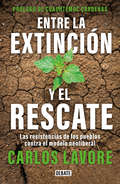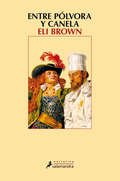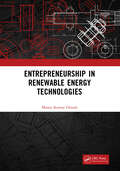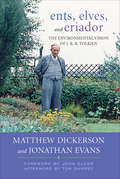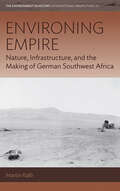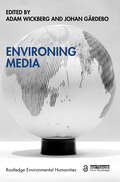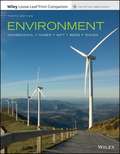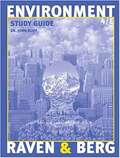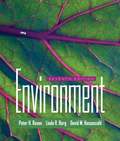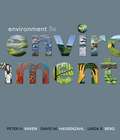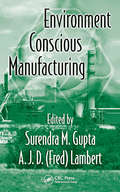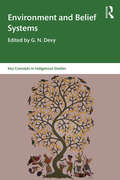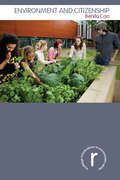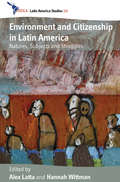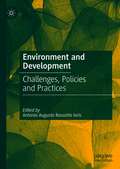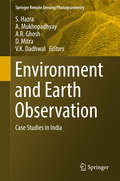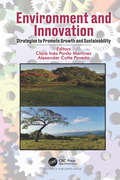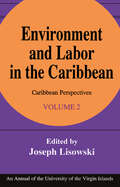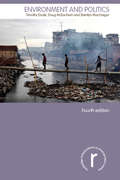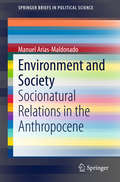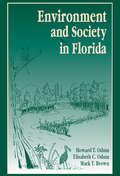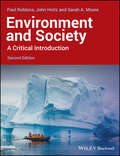- Table View
- List View
Entre la extinción y el rescate: Las resistencias de los pueblos contra el modelo neoliberal
by Carlos LavorePrólogo de Cuauhtémoc Cárdenas «Es crucial para nuestros países recuperar el control de los bienes y recursos naturales para su aprovechamiento, no explotación, en beneficio de las regiones y su población.» Cuauhtémoc Cárdenas El planeta atraviesa un estado de emergencia climática. La región latinoamericana padece los efectos del despojo. Pueblos, comunidades y sociedad organizada ofrecen una terca resistencia. Carlos Lavore, autor de diversos trabajos sobre participación, planeación y comunicación, da cuenta en este libro de lo que está ocurriendo a escala global con los bosques, hielos, suelos y agua, cuya brutal explotación se traduce en desastres “naturales” y colapsos parciales con severas afectaciones a la vida. A partir del recuento de los saqueos de bienes y recursos naturales en los últimos 40 años en América Latina, Lavore explica el proceso de extinción de la vida planetaria, o de buena parte de ella; reflexiona sobre los efectos negativos que ha producido la concentración del poder financiero, político y mediático; y pone el acento en las posibilidades de rescate. Si bien no existe un proyecto de liberación asumido colectivamente, este libro visibiliza las múltiples resistencias y consigna la potencialidad transformadora de distintas alternativas políticas y sociales a lo largo de América Latina, con un énfasis particular en México; como la experiencia del pueblo boliviano, el movimiento de los sin tierra, los zapatistas en el sureste mexicano, las fogatas populares en Cherán, el pueblo yaqui en Sonora, los movimientos de mujeres en las grandes ciudades y una notable cantidad de resistencias locales. Entre la extinción y el rescate ofrece una interpretación que resultará útil para la articulación política de quienes sueñan con reinventar el mundo, reinventar América Latina,reinventarnos.
Entre pólvora y canela
by Eli BrownLa primera novela de piratas para gourmets. Una historia singular y trepidante, llena de aventuras marítimas y culinarias. En 1819, el Imperio británico domina los mares con mano de hierro y expande sus tentáculos hasta los confines del mundo. Ajeno a todo esto vive Owen Wedgwood, un cocinero magnífico que lleva casi una década a las órdenes de lord Ramsey, uno de los comerciantes más conspicuos de la época. Pero la plácida rutina del viudo y solitario Owen se trunca en un instante cuando, en el transcurso de un banquete, es secuestrado por los tripulantes del Flying Rose, un barco pirata al mando de la temible Hannah Mabbot, que lo encierra en las bodegas del navío y le anuncia que, si en algo aprecia su vida, deberá prepararle cada domingo una cena exquisita. Y si dicen que el instinto de supervivencia agudiza el ingenio, Owen lo demostrará con creces. Pesea disponer de una cocina sin utensilios adecuados y una despensa saqueada por las ratas, recurrirá a un sinfín de artimañas culinarias para servir a Mabbot deliciosos platos como paté de arenque al romero sobre pan de nueces o raviolis de anguila ahumada al té. Así, semana tras semana, mientras el cocinero lucha con denuedo por salvar su pellejo, entre él y la fiera capitana Mabbot va entablándose una improbable relación que puede acarrearle otro tipo de problemas. Sobre el telón de fondo del lado más oscuro del Imperio, con la trata de esclavos y los abusos vinculados al comercio del té, la seda y la plata, esta singular y trepidante historia gira en torno a dos personajes geniales: el pacato Owen Wedgwood, un Sherezade de los fogones que sufre una auténtica metamorfosis vital entre corsarios desalmados y vivencias al límite, y la insólita y fogosa Hannah Mabbot, cuyos secretos de familia la impulsan hacia un destino que bascula entre la gloria y el fracaso. Una explosiva amalgama de emocionantes aventuras marineras e inauditas experiencias gastronómicas que cautiva al lector desde la primera página. La crítica ha dicho...«Exuberancia gastronómica y aventuras de piratas vertiginosas son dos sabores que combinan de manera fantástica en este libro irresistible.»NPR «Sus sorprendentes personajes y las aventuras en alta mar hacen que esta novela sea muy distinta de cualquier otra que hayáis leído.»BookPage «Una novela histórica de capa y espada y de seducción culinaria, con personajes que evocan el desesperado ingenio de Sherezade y la endiablada crueldad del capitán Ahab.»Publishers Weekly «Intrépida y sensual.»Kirkus Reviews «Una combinación perfecta entre El festín de Babette y Piratas del Caribe.»Library Journal
Entrepreneurship in Renewable Energy Technologies
by Manoj Kumar GhosalThis book focusses on various options of taking up ventures for starting entrepreneurship in small/large scale in the field of renewable energy technologies. The book covers the fundamentals of entrepreneurship, renewable energy resources, their technologies involved and applications along with financial evaluations. The book will cater to the needs of students, researchers, various stakeholders, entrepreneurs etc. by providing valuable information on renewable energy technologies and their applications in developing entrepreneurship and establishing enterprise at individual level, specifically focusing on low carbon technology for sustenance of environment which is becoming increasingly important.
Ents, Elves, and Eriador: The Environmental Vision of J.R.R. Tolkien (Culture of the Land)
by Jonathan Evans Matthew Dickerson&“A fascinating ecocritical evaluation&” of The Hobbit, The Lord of the Rings, The Silmarillion and other works of the master fantasist (Northeastern Naturalist). The Hobbit, The Lord of the Rings, and The Silmarillion are rarely considered to be works of environmental literature or mentioned together with such authors as John Muir, Rachel Carson, or Aldo Leopold. Nonetheless, Tolkien&’s vision of nature is as passionate and has had as profound an influence on his readers as that of many contemporary environmental writers. The burgeoning field of agrarianism provides new insights into Tolkien&’s view of the natural world and environmental responsibility. In Ents, Elves, and Eriador, Matthew Dickerson and Jonathan Evans show how Tolkien anticipated some of the tenets of modern environmentalism in the imagined world of Middle-earth and the races with which it is peopled. Dickerson and Evans examine Tolkien&’s major works as well as his lesser-known stories and essays, comparing his writing to that of the most important naturalists of the past century. A vital contribution to environmental literature and an essential addition to Tolkien scholarship, Ents, Elves, and Eriador offers both Tolkien fans and environmentalists an understanding of Middle-earth that has profound implications for environmental stewardship in the present and the future of our own world. &“This book is for everyone who loves the work of J. R. R. Tolkien, and who loves the world around them.&” —Armchair Interviews &“Anyone who ever thrilled to Tolkien&’s fighting trees, or to the earthy Tom Bombadil, or to the novel charm of the Shire will want to read this important and lovely book.&” —Bill McKibben, Scholar in Residence in Environmental Studies, Middlebury College
Environing Empire: Nature, Infrastructure and the Making of German Southwest Africa (Environment in History: International Perspectives #23)
by Martin KalbEven leaving aside the vast death and suffering that it wrought on indigenous populations, German ambitions to transform Southwest Africa in the early part of the twentieth century were futile for most. For years colonists wrestled ocean waters, desert landscapes, and widespread aridity as they tried to reach inland in their effort of turning outwardly barren lands into a profitable settler colony. In his innovative environmental history, Martin Kalb outlines the development of the colony up to World War I, deconstructing the common settler narrative, all to reveal the importance of natural forces and the Kaisereich’s everyday violence.
Environing Media (ISSN)
by Adam Wickberg Johan GärdeboThis edited volume interrogates the role of media technologies in the formation of environments, understood both as physical spaces and as epistemological constructs about them. Using the concept of ‘environing media’, the book advances a deeper understanding of how media processes – defined here as the storage, process, and transmission of data – influence human-Earth relations.Virtually all aspects of the interconnected global ecological crisis can be related to the intensification and acceleration of scaling up the human imprint on the planet by technological means. Combining ideas from the humanities, arts, and humanistic social sciences, Environing Media offers a perspective on how we entered the current geological epoch – the Anthropocene. The ten chapters explore colonial, planetary, and elemental environing media, with cases including indigenous history, ocean monitoring, computational history, climate modeling, environmental history, the air as medium, the biosphere, and the Earth system.Drawing upon a breadth of examples and expertise in history, anthropology, geography, cultural history, science and technology studies, and media studies, the book discovers a novel approach to human-Earth histories that demonstrates how technologies have mediated between humans and environments and in the process contributed to a societal feedback loop between knowing and doing environment, each impacting the other. Environing Media is a timely addition for scholars and upper-level students in environmental humanities and media studies.The Open Access version of chapters 1, 2, 3, 4, 5, 7, 8, and 9 are available at http://www.taylorfrancis.com/books/e/9781003282891. Chapters 1, 2, 4, 5, and 7 have been made available under a Creative Commons Attribution-Non Commercial-No Derivatives 4.0 (CC BY-NC-ND 4.0) license. Chapters 3, 8, and 9 have been made available under a Creative Commons Attribution (CC-BY 4.0) license.
Environing Media (Routledge Environmental Humanities)
by Adam Wickberg Johan GärdeboThis edited volume interrogates the role of media technologies in the formation of environments, understood both as physical spaces and as epistemological constructs about them. Using the concept of ‘environing media’, the book advances a deeper understanding of how media processes – defined here as the storage, process, and transmission of data – influence human-Earth relations. Virtually all aspects of the interconnected global ecological crisis can be related to the intensification and acceleration of scaling up the human imprint on the planet by technological means. Combining ideas from the humanities, arts, and humanistic social sciences, Environing Media offers a perspective on how we entered the current geological epoch – the Anthropocene. The ten chapters explore colonial, planetary, and elemental environing media, with cases including indigenous history, ocean monitoring, computational history, climate modeling, environmental history, the air as medium, the biosphere, and the Earth system. Drawing upon a breadth of examples and expertise in history, anthropology, geography, cultural history, science and technology studies, and media studies, the book discovers a novel approach to human-Earth histories that demonstrates how technologies have mediated between humans and environments and in the process contributed to a societal feedback loop between knowing and doing environment, each impacting the other. Environing Media is a timely addition for scholars and upper-level students in environmental humanities and media studies.
Environment
by Linda R. Berg Peter H. Raven David M. Hassenzahl Mary Catherine Hager Nancy Y. GiftEnvironment, Tenth Edition helps students understand the connection between the core concepts of the Environmental Science and their daily lives. The 10th edition enhanced e-text features a rich, interactive collection of current case studies and in-text examples, which provides students with the tools to understand, apply, and think critically about environmental science. It also provides instructors with powerful tools to assess individual students progresses well as the class as a whole.
Environment
by Linda R. Berg Peter H. Raven John AliffThe key to a sustainable future lies with the students. It is their passion, their understanding of the issues, and most of all their choices that will shape the future of our planet. As it has through three previous editions, Peter Raven and Linda Berg’s Environment gives students all the skills and tools they need to make the right choices for a sustainable environment! <p><p> Covering the enormous environmental challenges facing our world today, this Fourth Edition helps readers think critically about these challenges and understand the concepts that underlie environmental problems.
Environment (7th Edition)
by Linda R. Berg Peter H. Raven David M. HassenzahlOffering a more concise resource for environmental scientists, this seventh edition explores important environmental issues and shows how to apply this information on the job. It focuses on a systems approach, presenting a framework for thinking about environmental science.
Environment (Eighth Edition)
by Linda R. Berg Peter H. Raven David M. HassenzahlThe 8th Edition of "Environment" builds on the previous comprehensive, systems-based environmental science issue with more in-depth information on systems approach, which emphasizes the interconnected nature of environmental science throughout the text. The book is even more reader-friendly integrated learning system designed to help move from general concepts to specific applications and continues to focus on currency. It presents the basic facts, various perspectives on issues, and framework to help readers reach their own informed decisions in a changing marketplace.
Environment Conscious Manufacturing
by Surendra M. Gupta A. J. D. Fred LambertHotter temperatures, less arctic ice, loss of habitat-every other day, it seems, global warming and environmental issues make headlines. Consumer-driven environmental awareness combined with stricter recycling regulations have put the pressure on companies to produce and dispose of products in an environmentally responsible manner. Redefining indus
Environment News (Environments and Survival)
by Tessaly Jen Chloë Delafield Ari KrakowskiNIMAC-sourced textbook
Environment and Belief Systems (Key Concepts in Indigenous Studies)
by G. N. DevyPart of the series Key Concepts in Indigenous Studies, this book focuses on the concepts that recur in any discussion of nature, culture and society among the indigenous. The book, the first in a five-volume series, deals with the two crucial concepts of environment and belief systems of indigenous peoples from all the continents of the world. With contributions from renowned scholars, activists and experts from around the globe, it presents a salient picture of the environments of indigenous peoples and discusses the essential features of their belief systems. It explores indigenous perspectives related to religion, ritual and cultural practice, art and design, and natural resources, as well as climate change impacts among such communities in Latin and North America, Oceania (Australia, New Zealand and the South Pacific Islands), India, Brazil, Southeast Asia and Africa. Bringing together academic insights and experiences from the ground, this unique book's wide coverage will serve as a comprehensive guide for students, teachers and scholars of indigenous studies. It will be essential reading for those in anthropology, social anthropology, sociology and social exclusion studies, religion and theology, and cultural studies, as well as activists working with indigenous communities.
Environment and Citizenship (Routledge Introductions to Environment: Environment and Society Texts)
by Benito CaoThe increasing awareness of the human impact on the environment is having a profound effect on the concept and content of citizenship – one of the fundamental institutions that structures human relations. In what is the first introduction of its kind, this book provides an accessible, stimulating and multidimensional overview of the many ways in which concern for the environment – driven primarily by the preoccupation with sustainability – is reshaping our understanding of citizenship. Environment and Citizenship is structured into three parts. Part I introduces the reader to the concept and theories of citizenship and explores the impact that environmental concerns is having on contemporary formulations of citizenship, both traditional (e.g. national, liberal and republican) and emerging (e.g. cosmopolitan, ecological and ecofeminist). Part II explores the practical manifestations of environmental citizenship, with each chapter focusing on a particular actor: citizens, governments, and corporations. These chapters include references to examples and case studies from a wide range of countries, broadly categorized as belonging to the Global North and the Global South. Part III explores the making of green citizens and outlines the dominant articulations of environmental citizenship that emerge from formal education, news media and popular culture. The book concludes with a general reflection on the present and future of environmental citizenship. The book contains a variety of illustrations, boxed case-studies, links to online resources and suggestions for further reading. This original and engaging text is essential reading for students and scholars of environmental politics, sustainability studies and development studies, as well as for environmental activists, policy practitioners and environmental educators. More broadly, this book will appeal to anyone interested in and concerned with issues of sustainability, social justice and citizenship in the twenty-first century.
Environment and Citizenship in Latin America
by Alex Latta Hannah WittmanScholarship related to environmental questions in Latin America has only recently begun to coalesce around citizenship as both an empirical site of inquiry and an analytical frame of reference. This has led to a series of new insights and perspectives, but few efforts have been made to bring these various approaches into a sustained conversation across different social, temporal and geographic contexts. This volume is the result of a collaborative endeavour to advance debates on environmental citizenship, while simultaneously and systematically addressing broader theoretical and methodological questions related to the particularities of studying environment and citizenship in Latin America. Providing a window onto leading scholarship in the field, the book also sets an ambitious agenda to spark further research.
Environment and Development: Challenges, Policies and Practices
by Antonio Augusto Rossotto IorisThis book provides a comprehensive overview of emerging challenges facing different social groups, policy-makers and the international community related to economic growth, social development and environmental change, social inclusion and regional development. The book undertakes a critical assessment of the tensions associated with the failures of mainstream regulatory approaches and impacts of social and economic policies whilst widening the discussion on the interface between the expansion of the socio-environmental demands, equity and justice. These are crucial challenges, of great importance today and of equal relevance to the Global North and South. The book explores one of the main contradictions of development, the simplification of assessments and narrow consideration of alternatives. Taking this dilemma as its departure point, it goes on to examine the justification, trends and limitations of Western-based development and possible alternatives to fundamentally modify the basis and the rationale of the development process. It considers theoretical and lived experiences of development, paying attention to multiple scales, local realities and economic frontiers. Contributing authors explore policy recommendations and discuss effective practical tools for determining the values different people hold for ecosystem services and territorial resources. They cover the monitoring of change in the provision of ecosystem services that might increase the well-being of vulnerable groups as well as strategies to promote innovation and integrated, equitable and sustainable development.
Environment and Earth Observation
by S. Hazra A. Mukhopadhyay A. R. Ghosh D. Mitra V. K. DadhwalThis book presents relevant and contemporary research on the remote sensing of landscapes, agriculture & forestry, geomorphology, coasts & oceans, natural hazards and wild habitats. It highlights the application of remote sensing in understanding natural processes and oceanic features, as well as in creating mapping inventories of water resources across different spatial and temporal scales. Recent advances in hyperspectral imaging and high spatial resolution offer promising techniques for exploring various aspects related to the fruitful and cost-effective monitoring of large-scale environments. In the field of forestry and agriculture, the book addresses topics such as terrain analysis, forest management, updating current forest inventories, and vegetation cover type discrimination. It also elaborates delineation of various geo-morphological features of the earth's surface and natural disasters, and includes a special section on the remote sensing of wild habitats. Readers working in interdisciplinary sectors engaged in remote-sensing-based research benefit from the techniques presented.
Environment and Ecology for Pennsylvania: Meeting the Standards
by Globe FearonScience book for Pennsylvania students, on ecology and the environment.
Environment and Innovation: Strategies to Promote Growth and Sustainability
by Clara Inés Pardo Martínez and Alexander Cotte PovedaThis book seeks to show the role of sustainability and innovation in the business and productive sector as good strategy to improve performance and contribute to growth and sustainable development through innovative strategies applied to the management process. Different public and private organizations seek to maintain their business and market share, while developing strategies to improve environmental performance through innovation and address new challenges that seek a productive sector responsible on environmental issues. This book offers an analysis of the relationship between sustainability and innovation in production with the aim to offer strategies to improve sustainability performance.
Environment and Labor in the Caribbean
by Joseph LisowskiThe Caribbean Perspectives series began as a response to the need for scholarly investigations into social, scientific, and economic conditions affecting the least understood, or written about, part of the Americas. In this second volume the authors have included explorations of aspects of management and climate; as well as social, literary, and educational concerns in the eastern Caribbean, along with an extended study of the labor situation in the U.S. Virgin Islands.The opening chapter on resource management training in the Caribbean underscores the need for cooperation among eastern Caribbean universities and provides a practical model for implementation. This is followed by a significant study of rainfall patterns that could influence economic and cultural planning in the Virgin Islands. School environment is assessed in the next chapter, and educators will see how the quality of social support and interactions function in organizational contexts, especially as they relate to teacher morale.How fact becomes fiction is chronicled in a chapter dealing with Samuel Selvon's autobiographical novel, A Brighter Sun. The media clearly had a se-rious problem separating fact from fiction in their reporting of the aftermath of Hurricane Hugo in St. Croix. The next chapter investigates the causes of looting following that storm and lays to rest some widespread misconceptions.The final chapters focus on the labor movements in the Virgin Islands, both from historical and sociological points of view. These chapters not only help explain certain tendencies in the Caribbean work force but also outline social implications for the future. Some of these findings are bound to be controversial, such as the author's contention that the legacy of slavery is still being felt. This volume of Caribbean Perspectives offers both factual accounts and challenging insights into the diversity of Caribbean life and culture. The ideas and data found here will reverberate and suggest a host of analogous circumstances elsewhere. This volume, and the series as such, will interest students of the Caribbean, Latin America, and social development in the Third World.
Environment and Politics (Routledge Introductions to Environment: Environment and Society Texts)
by Timothy Doyle Doug McEachern Sherilyn MacGregorEnvironment and Politics 4th Edition is a concise introduction to this ever-expanding interdisciplinary field, explaining and illustrating how concepts, conflicts, movements, political systems and the practices of policy-making can be analysed in a systematic way. This book provides a comprehensive overview of the key themes that shape the field, and examines a diverse range of environmental problems and policy solutions found in different countries and cultures. The new edition has been extensively revised to include up-to-date explanation of green political theories and traditions and the debates that shape action on the ground. It contains an expanded discussion of environmental movements that work in the Global North, the Global South and transnationally. Greater attention has been given to the roles of corporations, non-governmental organizations, the media, consumers and citizens in order to reflect the changing nature of environmental governance. The text also focuses throughout on debates surrounding the concepts of environmental security, environmental justice and environmental citizenship. The authors examine the institutional responses of parliaments, administrative, legal and electoral systems; the more informal politics of social movements; and the politics of markets and the corporate sector as they respond to (or resist) the greening of societies. This engaging text has been fully updated to offer readers a greater understanding of international, national and local environmental politics as well as expected future developments at all levels. Environment and Politics continues to use illustrative examples of conflicts, people and events spanning North and South America, Europe, Asia, Africa and Australia, giving it global perspective and relevance. Each chapter includes questions for debate as well as a list of key words and resources for independent research. This successful textbook remains a key resource for undergraduate and postgraduate studies across politics, environmental studies, development studies and human geography courses.
Environment and Society
by Manuel Arias-MaldonadoThis short book sets out to explore the concept of nature in the context of a changing reality, in which the extent of our transformation of the environment has become evident: What is nature and to what extent has humanity transformed it? How do nature and society relate to one another? What does the idea of a sustainable society entail and how can nature be understood as a political subject? What is the Anthropocene and how does it affect nature as both an idea and a material entity? Has nature perhaps "ended?" In addressing these questions, the author delivers a concise but meaningful study of contemporary understandings of nature, one that goes beyond the limits posed by a single discipline. Adopting a truly comprehensive perspective, the work incorporates classical disciplines such as philosophy, evolutionary theory and the history of ideas; new and mixed approaches ranging from environmental sociology to neurobiology and ecological economics and the emerging area of the environmental humanities and represents a growing branch of political thought that views nature as a new political subject.
Environment and Society in Florida
by Howard T. OdumWith its lush wetlands, miles of beaches, and wide array of colorful wildlife, Florida is a fascinating and important ecosystem to study. Using this state as a model, Environment and Society in Florida offers a whole systems approach to understanding the environment and discusses the interactions between human systems and natural systems. It addresses the complicated issues stemming from these interactions among population, resources, economics, and environment, and discusses how we may better manage these challenges in the future.
Environment and Society: A Critical Introduction
by Paul Robbins John Hintz Sarah A. MooreSubstantially updated for the second edition, this engaging and innovative introduction to the environment and society uses key theoretical approaches to explore familiar objects. Features substantial revisions and updates for the second edition, including new chapters on E waste, mosquitoes and uranium, improved maps and graphics, new exercises, shorter theory chapters, and refocused sections on environmental solutions Discusses topics such as population and scarcity, commodities, environmental ethics, risks and hazards, and political economy and applies them to objects like bottled water, tuna, and trees Accessible for students, and accompanied by in-book and online resources including exercises and boxed discussions, an online test bank, notes, suggested reading, and website links for enhanced understanding Offers additional online support for instructors, including suggested teaching models, PowerPoint slides for each chapter with full-color graphics, and supplementary images and teaching material
